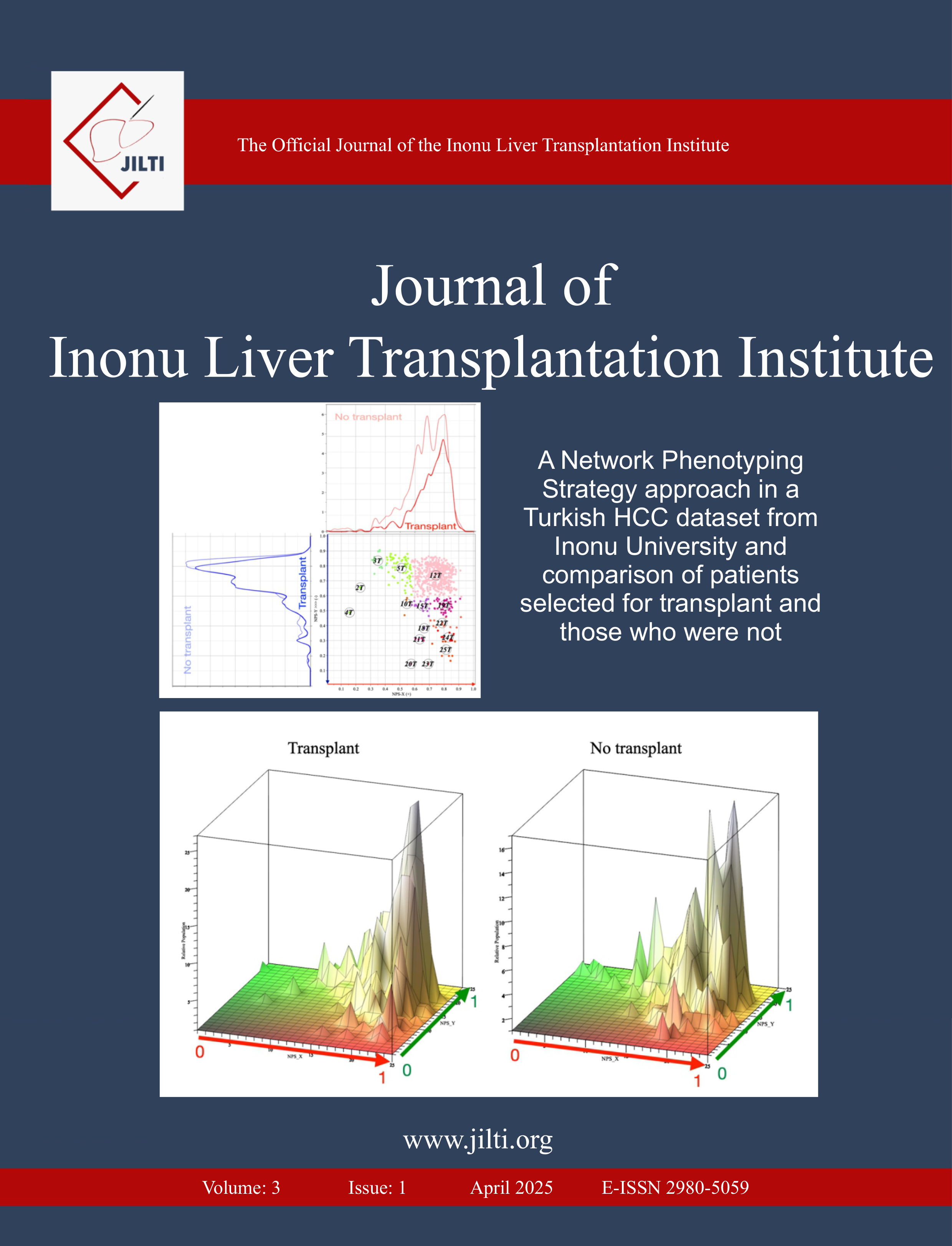Risk Factors for Early Hepatic Artery Thrombosis After Adult to Adult Living Donor Liver Transplantation
Koray Kutluturk, Tevfik Tolga Sahin, Sezai YilmazDepartment of Surgery, Inonu University Liver transplant Institute and Inonu University Faculty of Medicine, Malatya, TürkiyeObjectives: Early hepatic artery thrombosis (eHAT) is a primary cause of graft dysfunction, significantly contributing to mortality and morbidity in liver transplant (LT) recipients. This study aims to identify factors influencing the development of eHAT in LT patients at our institution.
Methods: This retrospective study included 428 adult patients who underwent living donor liver transplantation (LDLT) at our institution. The demographic, clinical, and operative characteristics of the remaining 428 patients were analyzed to evaluate risk factors for eHAT development.
Results: eHAT developed in 12 patients (2.8%). The recipient population had a male-to-female ratio of 294: 136, a median age of 52 years (range: 18-73), a mean graft-to-recipient weight ratio (GRWR) of 1.06±0.23, and a mean Model for End-Stage Liver Disease (MELD) score of 15.4±6.3. The incidence of eHAT was significantly higher in patients with hepaticojejunostomy (HJ) (5% vs. 2.4%; p<0.05) and in those who received cryopreserved artery grafts (CAG) (p<0.05). Among the 173 patients (40.2%) with a GRWR <0.98, 9 (5.2%) developed eHAT (p<0.05). Furthermore, both erythrocyte suspension (ES) and fresh frozen plasma (FFP) transfusion rates were significantly higher in patients who developed eHAT (p<0.05). Preoperative portal vein thrombosis (PVT) was also significantly associated with a higher rate of eHAT (p<0.05). Multivariate analysis identified CAG use for arterial reconstruction, HJ for biliary anastomosis, intraoperative FFP transfusion, GRWR <0.98, and t preoperative PVT as independent risk factors for eHAT.
Conclusion: Our findings indicate that hepaticojejunostomy, a graft-to-recipient weight ratio below 0.98, intraoperative FFP transfusion, pre-transplant PVT, and the use of CAG in hepatic arterial reconstruction are significant risk factors for early hepatic artery thrombosis following living donor liver transplantation.
Manuscript Language: English



